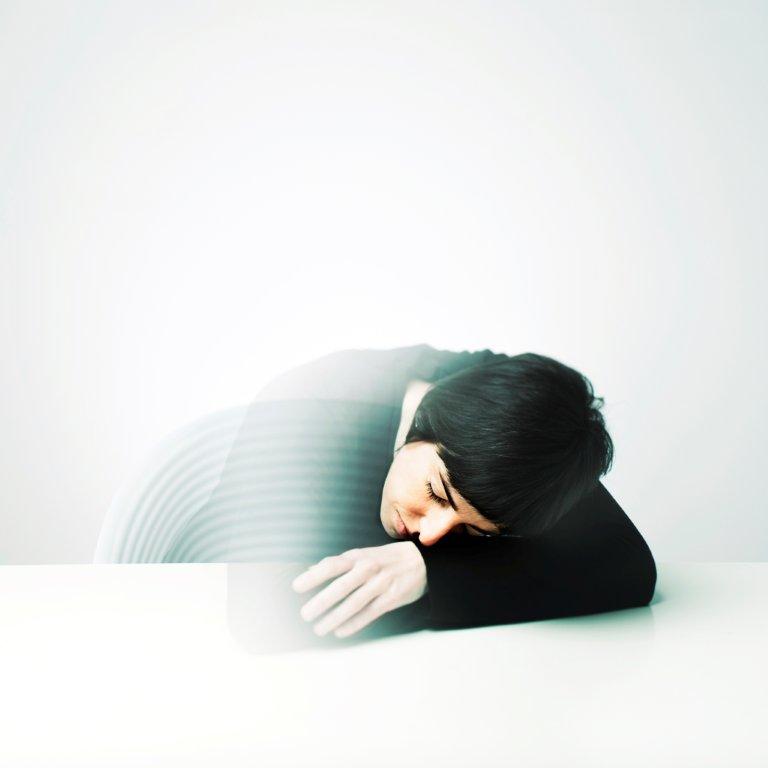Loading component...
At a glance
Updated 22 September 2023
Is taking a well-earned break every 90 minutes the secret to better performance? Perhaps it’s time to fashion a work practice that listens to our body rhythms and not 24/7 technology.
In the Zen Buddhist tradition, a story is told of a student asking his master: “What is enlightenment?” The master answers: “When hungry, eat. When tired, rest.”
Following such sensible advice sounds straightforward, but the suggestion of resting when tired – especially when you’re at work – can seem far-fetched or even offensive to time-poor, overstretched workers.
Psychotherapist Richard Hill, a trainer in neuroscience and human behaviour, encourages his clients to take rest breaks specifically at the 90-minute mark after a focused work session.
This time frame is based on the idea that after one and a half to two hours, our attention and energy wane due to the cycling of various biological processes.
Hill even conducts his therapy sessions over 90 minutes, like his mentor Dr Ernest Rossi, a psychotherapist in the US who has been researching the 90- to 120-minute cycle since the 1980s.
“When I first learnt about these rhythms nine years ago, it made total sense to me,” says Hill.
“I was working as an actor at the time and knew that the show couldn’t be any longer than two hours or you would lose people’s attention.”
What's so special about the 90-minute mark?
Psychological research shows that speed and accuracy suffer when we stay on a task too long. But is there anything special about the 90- to 120-minute time frame? Or is it simply that taking breaks is good for performance?
There’s no doubt that specific rhythms are imprinted into our biological systems: there is the heartbeat, breathing, digestion and a range of hormones that ebb and flow each day.
It’s also obvious that the “ebb” part is just as important to our wellbeing as the “flow”.
Some body rhythms are obvious, such as the 24-hour sleep-wake cycle. Within that, there is clear evidence of a 12-hour cycle marked by a dip in alertness in the early hours of the morning just before dawn – shift workers know it well – and again in the mid-afternoon, according to sleep researcher Professor Leon Lack, from Adelaide’s Flinders University.
Ultradian rhythm refers to a biological cycle of less than 24 hours – sometimes qualified as more than an hour.
The ultradian rhythm

The notion that ultradian rhythms might affect a person’s daytime performance dates back to the late 1950s, when Russian-born Nathan Kleitman – recognised as the father of modern sleep research – discovered that night sleep contained two distinct phases that we cycle through every 90 to 120 minutes.
The two phases, distinguished by brain waves, heart rate, breathing rate, muscle tone and eye movements, were named Rapid Eye Movement (REM) sleep and Non Rapid Eye Movement (NREM) sleep.
Kleitman went on to suggest that the REM-NREM cycle was one expression of a basic rest activity cycle that continued during the day – a cycle evident in the feeding patterns of infants and rodents.
In the following decades a number of studies supported the existence of cycles from 70 to 125 minutes in humans, observed in body functions such as alertness, contractions of the gut, and the electrical activity of the brain.
Even the efficiency of nasal airflow was found to alternate between the left and right nostril during the day, averaging a two- to three-hour cycle. Irregular nasal cycles were associated with anxiety and stress-related symptoms.
Early evidence also suggested that the basic rest activity cycle, or BRAC, involved alternating between the left and the right brain activation, with a corresponding switch in efficiency between verbal and spatial tasks.
This type of finding feeds an appealing notion that there is an optimal daily schedule for different tasks. Traditional Chinese medicine is built on this premise, with a belief that the body’s vital life energy – “chi” – cycles through a different organ every two hours. Specific everyday activities are recommended for each two-hour block to ensure optimal health.
But not all research confirms the existence of ultradian rhythms. When Lack examined some of his research data collected from sleep-deprived people every half-hour over a 24-hour period, he found no evidence of 90- to 120-minute cycles in alertness.
“The rhythms are either very subtle and hard to detect, or don’t exist,” says Lack. “I’m an agnostic – if I find evidence I will publish it.”
"Less is known about the existence of shorter, ultradian rhythms affecting behaviours such as concentration throughout the day"
So the question remains: if the effects of ultradian rhythms are so subtle, do they stand any chance of recognition in our high-speed, no-pain, no-gain culture?
Modern society seems to regard the need to rest as a sign of weakness, and offers caffeine, stress and medication as a way to keep us going when we’re feeling wrung out.
“Can’t they just suck it up and get on with it?” is a common reaction when psychotherapist Hill suggests to corporate clients that workers should take a brief break when flagging.
“We don’t listen to our bodies because we have moved the centre of our attention outside of ourselves, to external achievement and recognition,” Hill asserts.
“And when we don’t listen to what’s going on inside, and continually override our rhythms, that leads to chronic stress and a range of psychosomatic symptoms.”
Jean Gomes, chairman of The Energy Project in the UK, works with organisations around the world to improve sustainable performance from employees. He is also used to getting hostile reactions to the apparently benign suggestion of taking a short break after a 90-minute “sprint”.
“The underlying value exchange between individuals and employers has, for the last 100 years, been implicitly time for money,” Gomes explains.
“We are teaching leaders that sustainable performance requires new value exchanges. For example, if you want people’s energy, you have to value renewal. This is a massive cultural shift.”
And “massive” is no exaggeration. About 90 per cent of workers don’t take any kind of defined break throughout the day, according to data gathered by The Energy Project across numerous industries and 93 countries. Lunch has become a multi-tasking munch taken in the company of the computer.
“Nordic countries are much better, and the French as well, but even they are changing,” says Gomes.
This default position of working continuously throughout the day, and often night, can be shifted through small, local steps according to Annemie Ress, who has worked for organisations including Skype, PayPal and eBay.
As head of people innovation at eBay, Ress helped bring in better energy management practices for thousands of eBay staff globally. This included the 90-minute work cycle and limiting meetings to 45 minutes.
“It’s one of the initiatives that worked best across a whole range of cultures, because it appeals to a very basic human need,” says Ress.
“We started by making connections at a small team level, giving them a menu of practices that they could try,” says Ress.
“Once they start trying things, they get energised and that creates a buzz. Others hear about it and say: ‘We want to try it, too’. It’s a tailored approach where the teams figure out how to make it work, deciding together how they signal when they need a break.”
Workers who do break about every 90 minutes have reported a nearly 30 per cent higher level of focus across the day, a 48 per cent greater ability to think creatively, and a 46 per cent higher level of health and wellbeing, according to a survey of nearly 14,000 employees around the world by the Harvard Business Review and The Energy Project.
Still unsure about the effect of body rhythms on your day? Hill invites experimentation.
“Test it out and see what happens. If you discover it’s healthy for you, pay attention to your body, rather than treat it as an interference to your economic success.”
Body Basics
9.30am/10am
Energy and accuracy peak. Do demanding tasks now.
11am
Use morning tea to break up 90-minute work sessions.
12.30pm/1pm
Break for lunch to refuel.
2–4pm
Energy drops. Do less demanding tasks in shorter bursts. Schedule a break.
5pm/6pm
Alertness starts to peak again. A great time to churn through a volume of work.
Ready, set, go … break

Get ready: Pre-plan exactly what work will you do in this 90-minute time frame. Decide the night before, over breakfast or at least in the few minutes before.
Block out distractions. Close all your tabs, block incoming calls and batch emails to arrive two hours later. Let your colleagues know when you will next be available.
Set: Do you have everything you need? Have a glass of water at your desk, maybe a snack so you aren’t tempted to get up for one.
Go!: Give it your all, knowing you can rest in 90 minutes. Try 30- or 45-minute blocks at first if time is limited or your attention needs retraining.
Take a break: This could be a minute or two of deep breathing, stretching, having a chat with a colleague, a five- to 10-minute walk, or a longer break if working at high intensity. Dr Ernest Rossi recommends a 20-minute break – perfect for a power nap.
Notice: Check in at the end of the day – do you have some energy left? How would you rate your focus and efficiency for the day?
Sources: Jean Gomes of The Energy Project, digital productivity coach Megan Iemma and Lani Pauli.
What are the signals it’s time to break?
- A wandering mind, unable to focus
- Staring into space, daydreaming
- Wanting to stretch and release tension in your muscles
- Yawning, sighing, drooping eyes
- Making mistakes in simple tasks
- A clear drop in output
- More emotionally reactive
Source: Sleep Your Way to Success by Lesley Gillett (Time Out Seminar Company, 2001).

